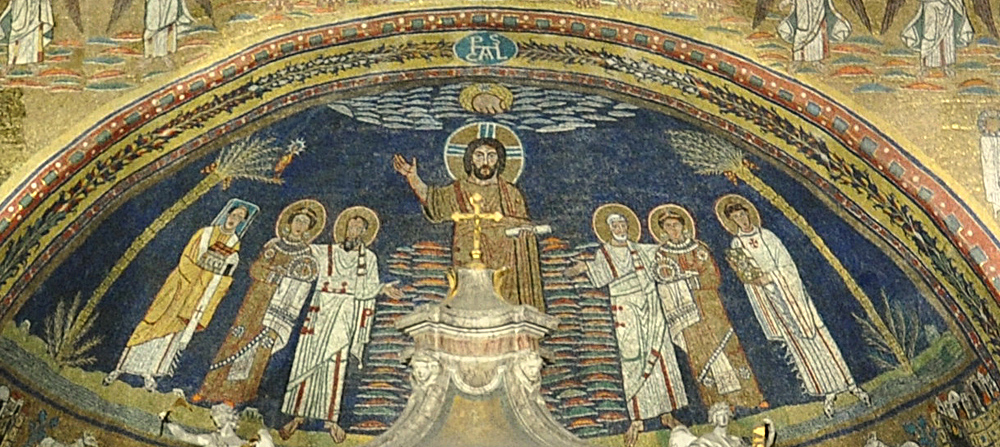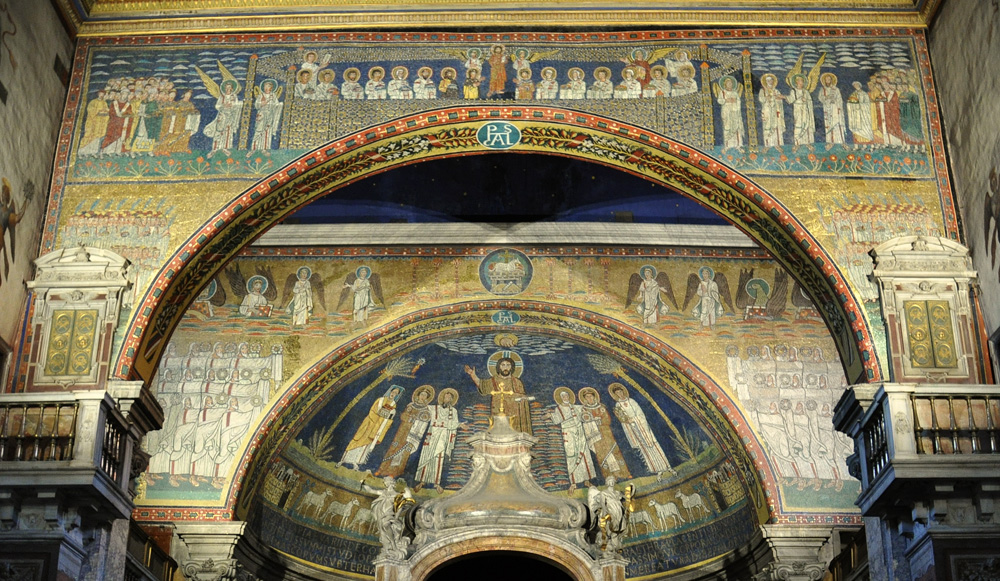Beyond the triumphal arch is the "apsidal arch" that continues the imagery from Revelation. Its upper register presents Christ as the Lamb, flanked by angels and the creatures symbolizing the four evangelists (Revelation 5:6). In the lower register, the 24 elders of Revelation prepare to offer their golden crowns to the Lamb (Revelation 4:10-11).
Looking through the arch, we see the apsidal basin:

In the center, Christ stands before a stylized body of water while the hand of God the Father reaches down with a crown for his head, perhaps recalling Vulgate Psalm 20:4, "For thou hast prevented [welcomed] him with blessings of sweetness: thou hast set on his head a crown of precious stones." The water behind Christ can refer either to the "sea of glass" of Revelation 4:6 or to the water of Christ's baptism, over which the Father also presided.
On the left and right, St. Praxedes and St. Pudentiana. like the 24 elders, bring their golden crowns to Christ. They are presented by St. Paul on the left (pointy beard) and St. Peter on the right (short, square beard).
On the far left, with a square halo because he was alive at the time of this mosaic, Pope Paschal I holds a maquette of the present church building, which he had constructed. The maquette and the crowns all sit on cloth napkins, emblematic of a gift to or from an emperor. On the far right is a deacon saint, probably St. Lawrence.
A phoenix, symbol of Christ in the Resurrection, sits on a branch of the palm tree on the left.
View the entire apse with arches in full resolution
Detail photograph and further commentary on the
Detail photographs and commentaries on the apsidal basin:
